The Commandant of the Marine Corps has a vision for a new way of fighting future wars and making regular deployments abroad.

www.twz.com
Last month we published a review of Marine Corps Commandant General David Berger’s strategic guidance, which called for a significant modernization in Marine Corps amphibious doctrine.
While we concurred with his premise, that modern detection and targeting systems combined with long-range precision-guided weapons like anti-ship ballistic missiles and high-speed anti-ship cruise missiles, make an amphibious landing in anything other than a relatively permissive environment extremely risky, we were quick to point out that his guidance did not yet have a lot of detail.
Recent developments have started to fill in the characteristics and features that will turn his overall plans into a definable, new doctrine regarding how Marines will conduct regularly scheduled rotational deployments and how they will fight during a time of war.
While no major procurement plans or budgets have been announced, several recent developments do indicate that the new strategic guidance is influencing and expanding future procurement options.
Offshore Support Vessel
As first reported by the USNI News, the Navy and Marine Corps are considering procuring relatively small Offshore Support Vessels (OSV) to supplement the existing fleet of large amphibious assault vessels that the Navy currently operates to support rotational deployments of Marine Expeditionary Units (MEU).
While the Marines have tinkered with alternate forms of deployment, like doing experimental short-term exercises on Military Sealift Command cargo ships, the basic model of operating from amphibious assault ships will be the norm until the Navy and Marine Corps procure something significantly different than what they currently have.
Regarding the OSV, Naval Sea Systems Command (NAVSEA) previously developed and procured two 60 meter OSVs for the Iraqi Navy.
These vessels are a cross between patrol boats and logistical support ships, capable of carrying troops, cargo, and in the case of the Iraqi Navy OSVs, servicing oil platforms.
The lessons learned from already having designed and procured two hulls for the Iraqi Navy would certainly inform the process if the Navy and Marine Corps decide to go ahead and buy this platform.
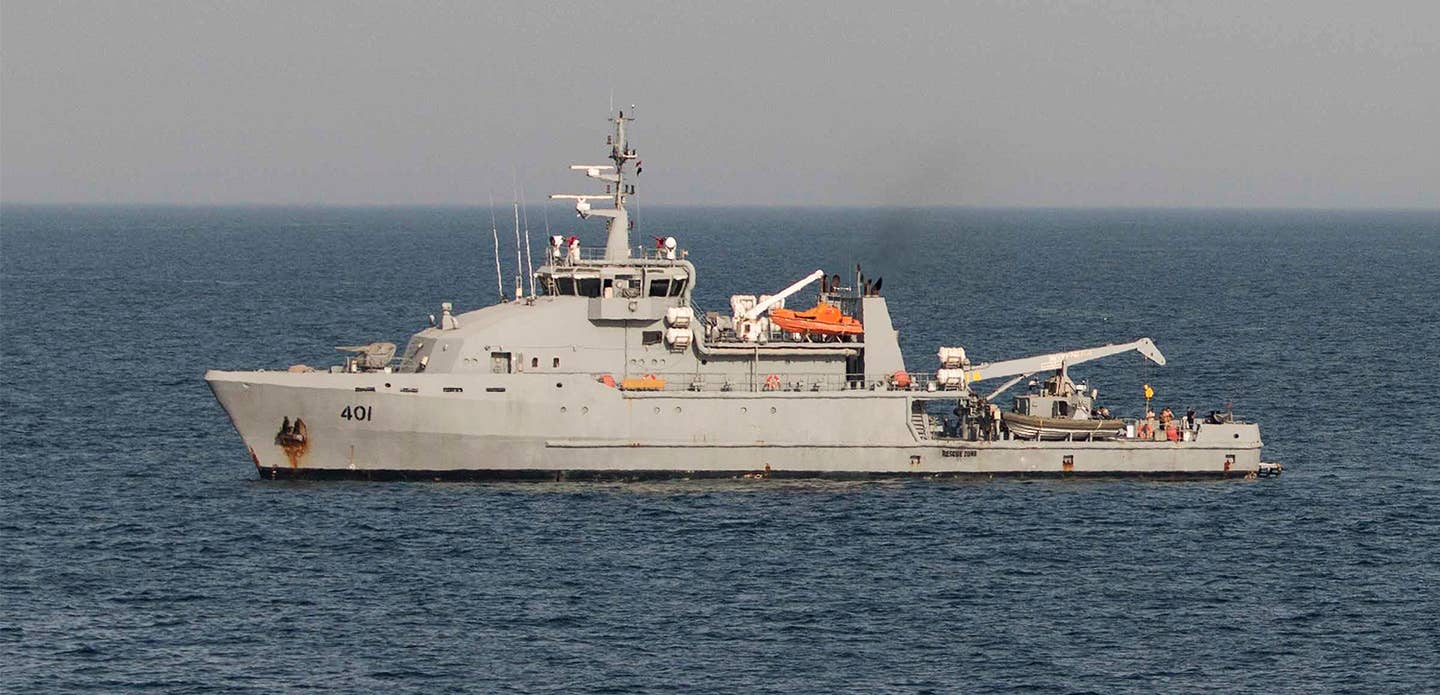
Iraqi navy Al Basra-class offshore support vessel Al Basra (OSV 401)., USN
OSV Supplements, Not Replaces, Amphibious Fleet
Based on the size and range of the OSV, it would probably operate in close cooperation with the existing fleet of amphibious assault ships. In other words, it would supplement and expand the existing operational model, rather than replace it.
In this concept, the amphibious assault ships would still hold the bulk of the Marines and their equipment, then transfer Marines and equipment to the OSV for forward operations.
At first glance, this might seem like a concept of operations similar to what US Special Operations Command (SOCOM) has developed with the MV Ocean Trader.
Originally built as a commercial vessel, the vessel was purchased by Military Sealift Command (MSC) and highly modified to support special operations personnel operating smaller craft, such as the Rigid Hull Inflatable Boat (RHIB) or the Combat Craft Assault (CCA). A number of other small surface craft designs could also potentially be operated from this platform.
With that said, MV Ocean Trader and the OSV are fundamentally different platforms. At over 20,000 tons displacement, the MV Ocean Trader is a high-capacity, long-range, and long-endurance platform supporting special operations at sea.
It’s just smaller than the USS San Antonio (LPD-17), the lead ship in the Navy’s newest class of amphibious assault ships. In contrast, the OSV displaces under 1,000 tons and has a much shorter range.
The most likely operational concept for OSV is not as a mothership, but as a primary platform executing a distributed concept of operations, which was one of General Berger’s points of emphasis in his planning guidance.
By using numerous smaller and less identifiable platforms, like the OSV, the Navy and Marine Corps intend to complicate a potential enemy’s detection, tracking, and defensive problems. Amphibious assault ships are large and have a unique appearance.
OSVs or a similar platform are much smaller, and less readily identifiable as uniquely military platforms.
It’s also possible that vessels similar to the Ocean Trader could eventually find their way into the Marines’ maritime combat playbook and they could help enlarge the ‘Gator Navy’ fleet and allow it to operate more flexibly.
You could buy multiple Ocean Traders for the cost of a single San Antonio class ship. This would allow Marines to be in more places at once given a set budget.
With that said, regardless of how the operational and deployment models shake out in the long run, it’s clear the Navy and Marine Corps are looking at a wide array of smaller surface ships that will supplement the existing amphibious assault ship fleet without divesting or replacing it—at least for now.
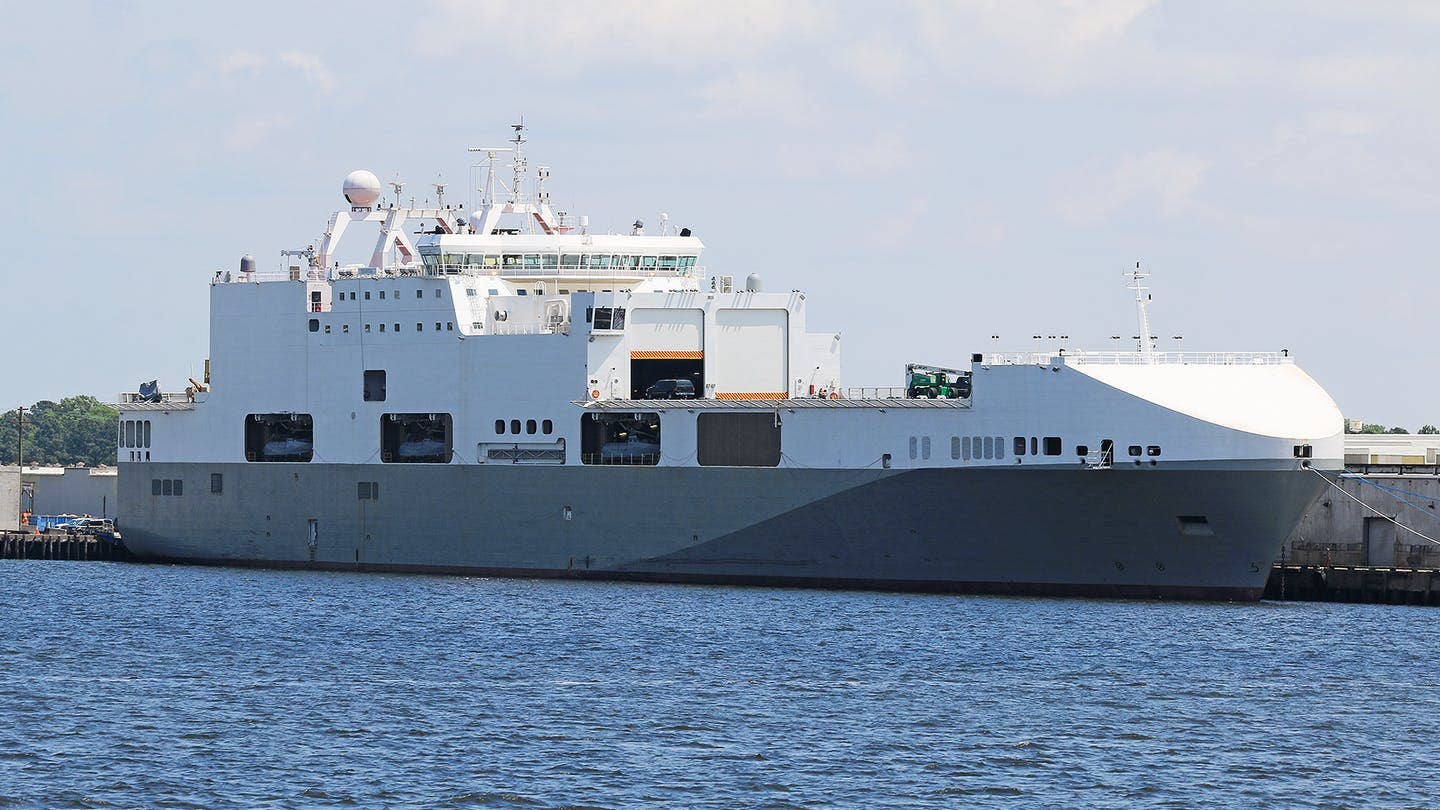
M/V Ocean Trader packing CCAs., DAVID KOZDRON
Marine Corps Weapons Experimentation And Development
The Marines have been pushing hard to develop smaller, lighter, more mobile weapons systems, like mini rocket systems that can be transported inside a MV-22 Osprey or CH-53K helicopter
This trend seems tailor-made to provide firepower to a vessel like the OSV, which would probably come equipped with minimal offensive capability of its own.
The new Marine philosophy seems focused on procuring or modifying weapons systems that they can take with them, regardless of what vessel or platform they are on.
An example of this is the M142 High Mobility Artillery Rocket System (HIMARS). Originally developed for the US Army, the Marines procured HIMARS with the intent of transporting the system onboard ship as cargo, then moving it ashore to operate it as a mobile truck-mounted rocket launching platform.
With the new focus on modifying their existing weapons systems to operate from whatever ship they happen to be on at the moment, the Marines recently demonstrated the ability to fire the HIMARS from sea, with the rocket launcher simply chained to the deck of an amphibious assault ship.
The same HIMARS launcher is also capable of firing Deep Strike, which could range far beyond previous range limitations now that we are in the post INF era.
Another possibility for the OSV is the Navy’s new Adaptive Deck Launcher (ADL) that’s designed to be a bolt-on, highly-flexible missile launcher that can be easily mounted on a ship with enough deck space to host it.
For certain missions, this could turn a smaller patrol ship into a high-end ‘shooter.’
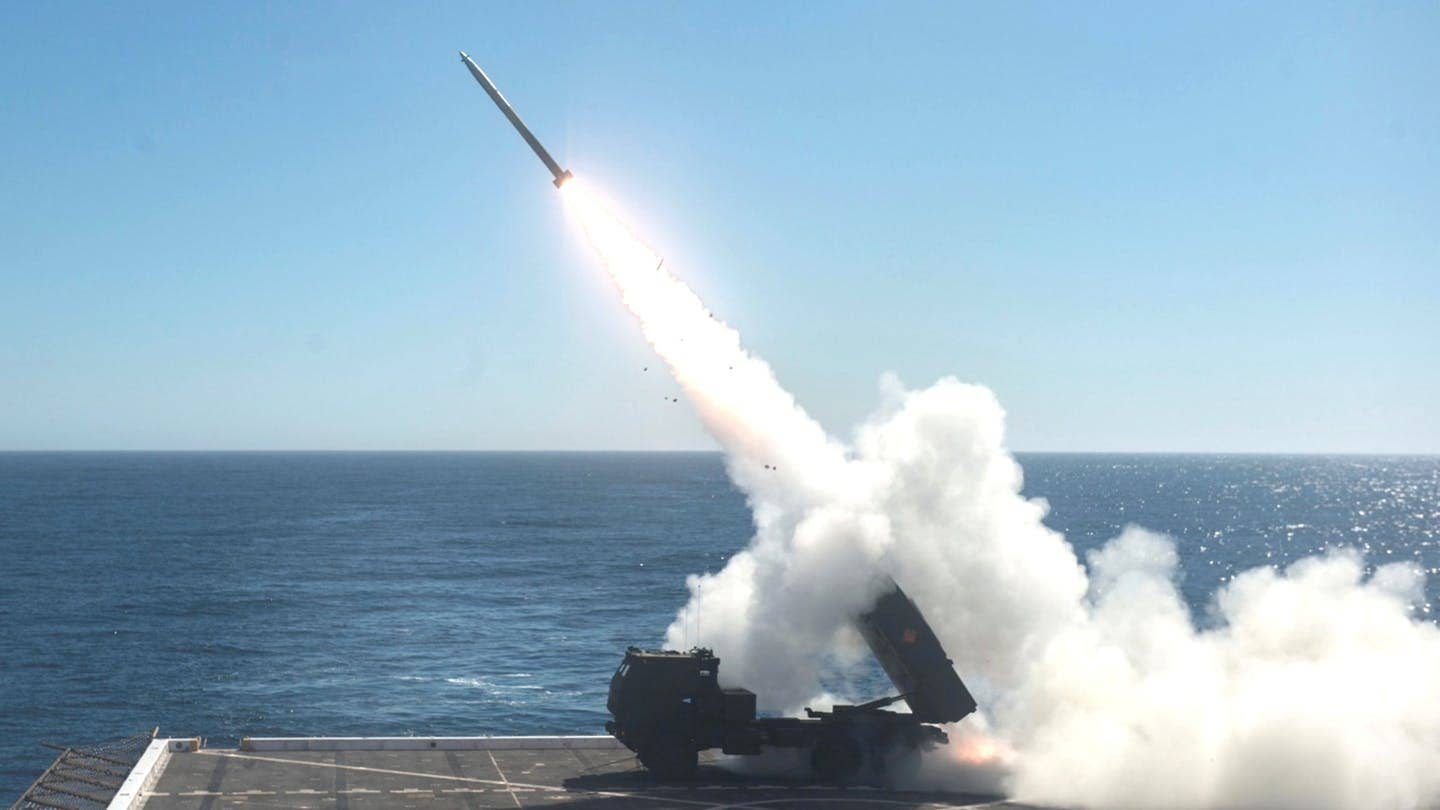
HIMARS firing off the stern of USS Anchorage, a San Antonio-class landing platform dock., USN
Adjusting The F-35 Buy
The OSV is not the only indication that the Marine Corps is adapting to General Berger’s new vision. As reported by Aviation Week and Space Technology, the Marines are adjusting the mix of F-35B and F-35C airframes they plan to procure.
The F-35B is the short takeoff and vertical landing (STOVL) variant optimized to operate from amphibious assault ships, and the F-35C is the carrier variant that the USMC would also use from land bases, like their Hornets.
While the total number of Marine F-35 airframes to be procured remains steady at 420, Marine Corps Headquarters is preparing to reduce the F-35B and increase the F-35C buy. As it sits today, 353 F-35Bs and 67 F-35Cs are to be procured.
Although nothing official has been announced yet, if this happens it is one possible sign the Marine Corps is shifting emphasis away from the amphibious assault ship centric planning model that has reigned for at least the last several decades.
The F-35Bs were always going to replace some of the Marines’ Hornet squadrons, but just how many F-35Cs will be procured going forward could be a major tell as to what the USMC sees its future STOVL needs being.
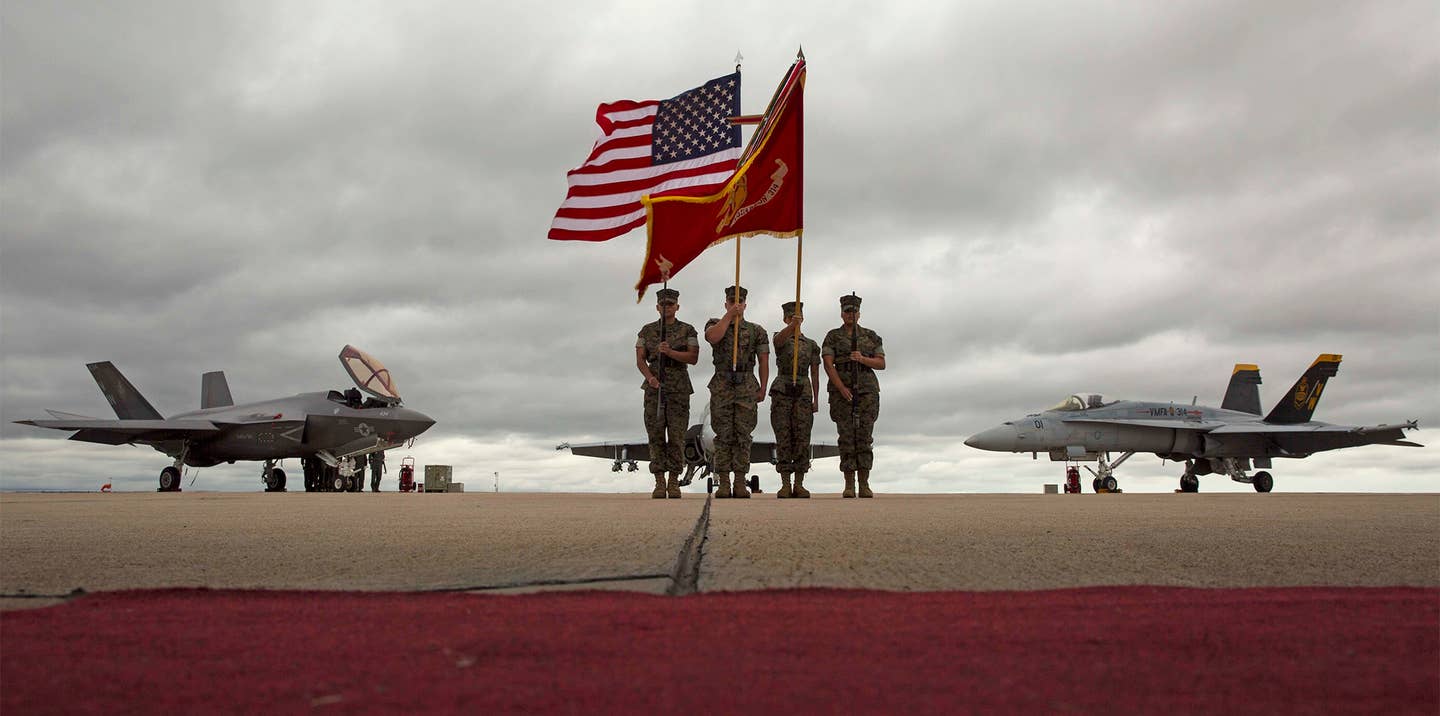
Introduction ceremony for the F-35C by VMFA-314. , USMC
Contracted Support In Lieu Of Acquisition
Even before the Navy and Marine Corps opened up these procurement options for discussion in response to General Berger’s guidance, the Marines were experimenting with how to accelerate deployment of capabilities outside normal procurement channels.
As an example of this, the Navy announced last year that it had awarded a contract to General Atomics to provide, maintain, and operate its own MQ-9 Reaper drones in support of a Marine Corps task force in Afghanistan.
To be clear, this contract was only intended to provide surveillance and reconnaissance support, and not armed strike in support of Marines.
Still, it is a significant indicator in terms of how the Marines intend to get critical capabilities to the front lines without going through the lengthy formal process to establish and fund a program of record.
In any case, the Marines are clearly experimenting not only with new ways to get capabilities to forward-deployed personnel outside of the standard procurement system.
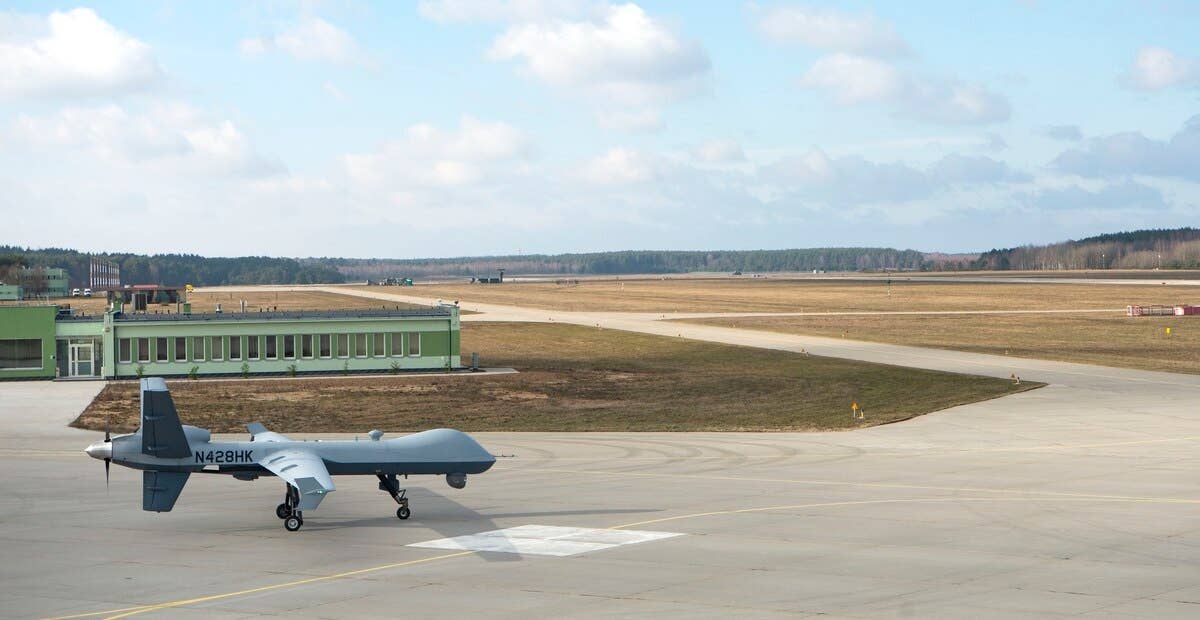
A civilian registered MQ-9 Reaper. , USAF
Would Contracted Maritime Capabilities Work?
Using contractors instead of uniformed personnel to deploy capabilities is a model that might also extend to the new maritime construct.
In the same way that it is quicker and easier for a contractor like General Atomics to put together a deployment package of drones to support Marines in Afghanistan than it is for the Marine Corps to build that capability into a Future Years Defense Plan (FYDP), it might also be easier for the Marine Corps to contract some maritime support on the open market.
So far, all we have seen the Marine Corps do in this vein is deploy smaller units onboard US Military Sealift Command (MSC) ships.
One factor that has to be considered with respect to contracted maritime support is the lack of self-defense capabilities.
A prime example of this is the fate of the High-Speed Vessel Two (HSV-2) Swift, which MSC leased for ten years from 2003-2013.
During that time, Swift was used for special operations support, logistics, humanitarian assistance, and foreign partnership exercises.
In short, Swift showed the ability to flex to a variety of missions, which is exactly what the Marines are looking for in ship platforms that will allow them to expand beyond the amphibious assault ship model of deployment.
Unfortunately, Swift was badly damaged while transiting the Red Sea as a result of an attack by Houthis rebels based in Yemen.
The fate of Swift is not dispositive, but it does show that at least some of the dangers that inspired General Berger to move the Marine Corps away from its traditional amphibious doctrine might also apply to smaller, non-traditional ships as well as amphibious assault ships, and especially largely defenseless ones.
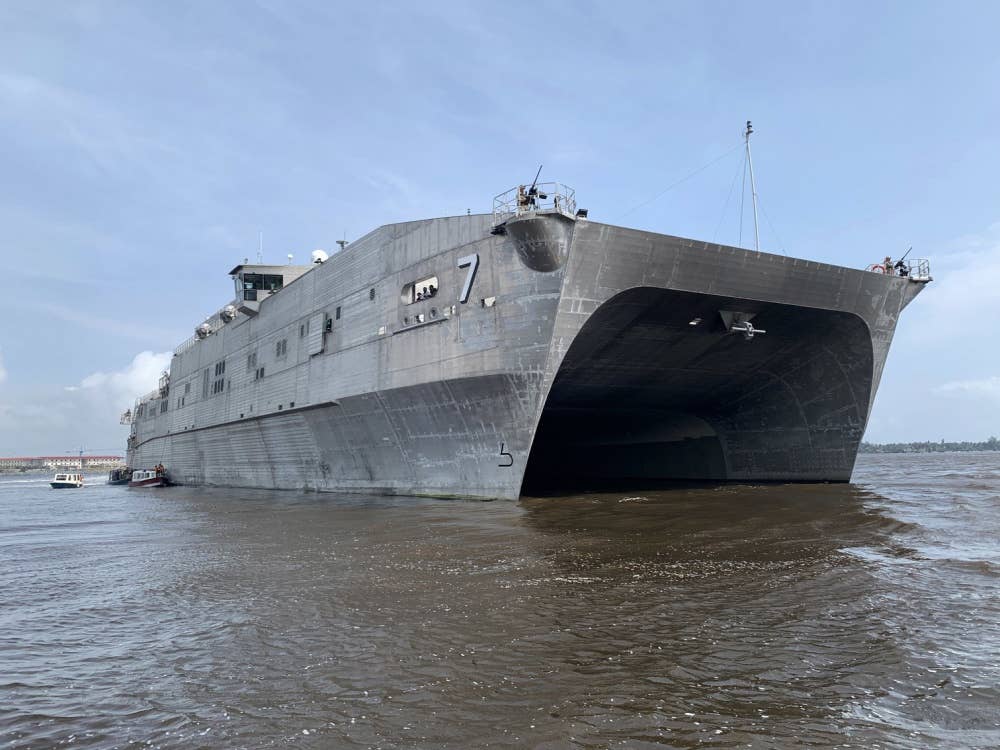
The Spearhead class expeditionary fast transport ship USNS Carson City (T-EPF7)., USN
Show Me The Money
At this point, it might be reasonable to ask how the Navy and Marine Corps are going to pay to expand their capabilities beyond the core fleet of amphibious assault ships. As described in the USNI News reporting we linked to at the beginning of this article, during a panel as part of Modern Day Marine 2019, Frank DiGiovanni, the deputy director of expeditionary warfare on the Chief of Naval Operations staff, made it clear that Navy and Marine Corps strategists were looking at the OSV and other options as additive to the existing fleet of amphibious assault ships, and not as a replacement for them.
That answer is adequate for the time being, because the OSV and other options are just items for discussion at this point.
Nothing has been formally proposed, Congress has not yet marked up the Fiscal Year 2021 National Defense Authorization Act (NDAA), so there is no budget or timeline for procuring these assets at this point.
With that said, sooner or later Navy and Marine Corps leadership will have to provide specific plans, budgets, and timelines regarding the size and composition of the additional capabilities like the OSV that will expand the deployment options for the Marine Corps beyond the current capabilities of the existing amphibious assault ship fleet.
Unless there is net growth in the Navy budget, which seems highly unlikely, those new small ships will have to be funded by reducing some other line item in the Navy budget.
The most obvious solution seems to be to reduce the rate at which new amphibious assault ships are procured.
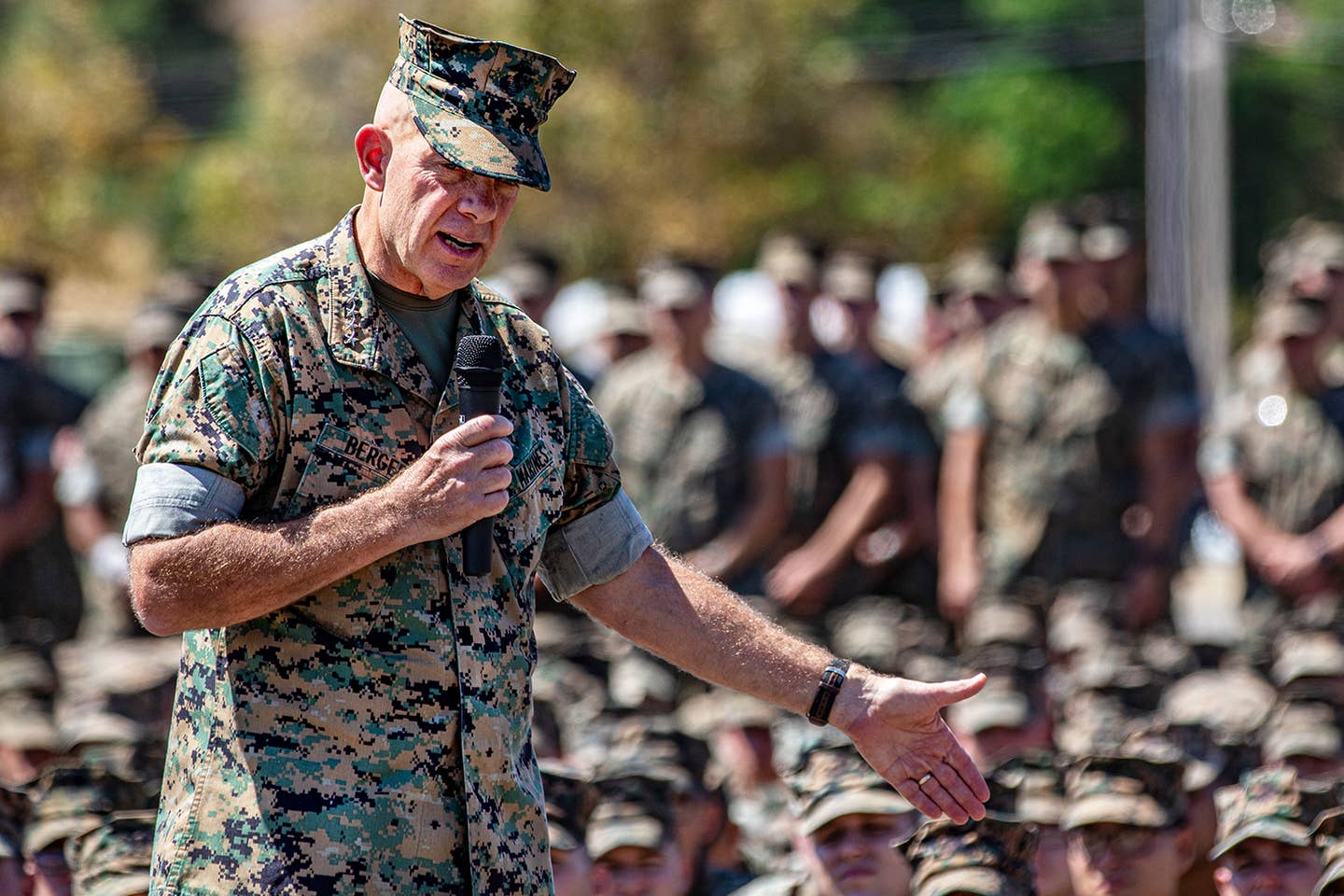
Gen. David H. Berger, commandant of the Marine Corps, talks to Marines., USMC
The Next Checkpoint
The Navy is currently conducting the 2019 Force Structure Assessment (FSA). It is due to be released by the end of 2019, perhaps earlier.
The 2016 FSA established the Navy’s end strength goal of 355 commissioned warships, including 38 amphibious assault ships.
General Berger’s guidance from earlier this summer said that “We will no longer reference the 2016 Force Structure Assessment as the basis for our arguments and force structure justifications.”
It seems reasonable to assume that the 2019 FSA will incorporate and formalize General Berger’s strategic guidance.
Navy and Marine Corps leadership should be commended for proactively engaging in a very difficult strategic reassessment of the roles and missions of the Marine Corps and support provided by the Navy’s amphibious assault ship fleet.
The 2019 FSA will inevitably contain much more detail about what comes next for the Navy and Marine Corps with respect to supporting rotational deployments, the amphibious assault ship fleet, and new platforms and capabilities.





